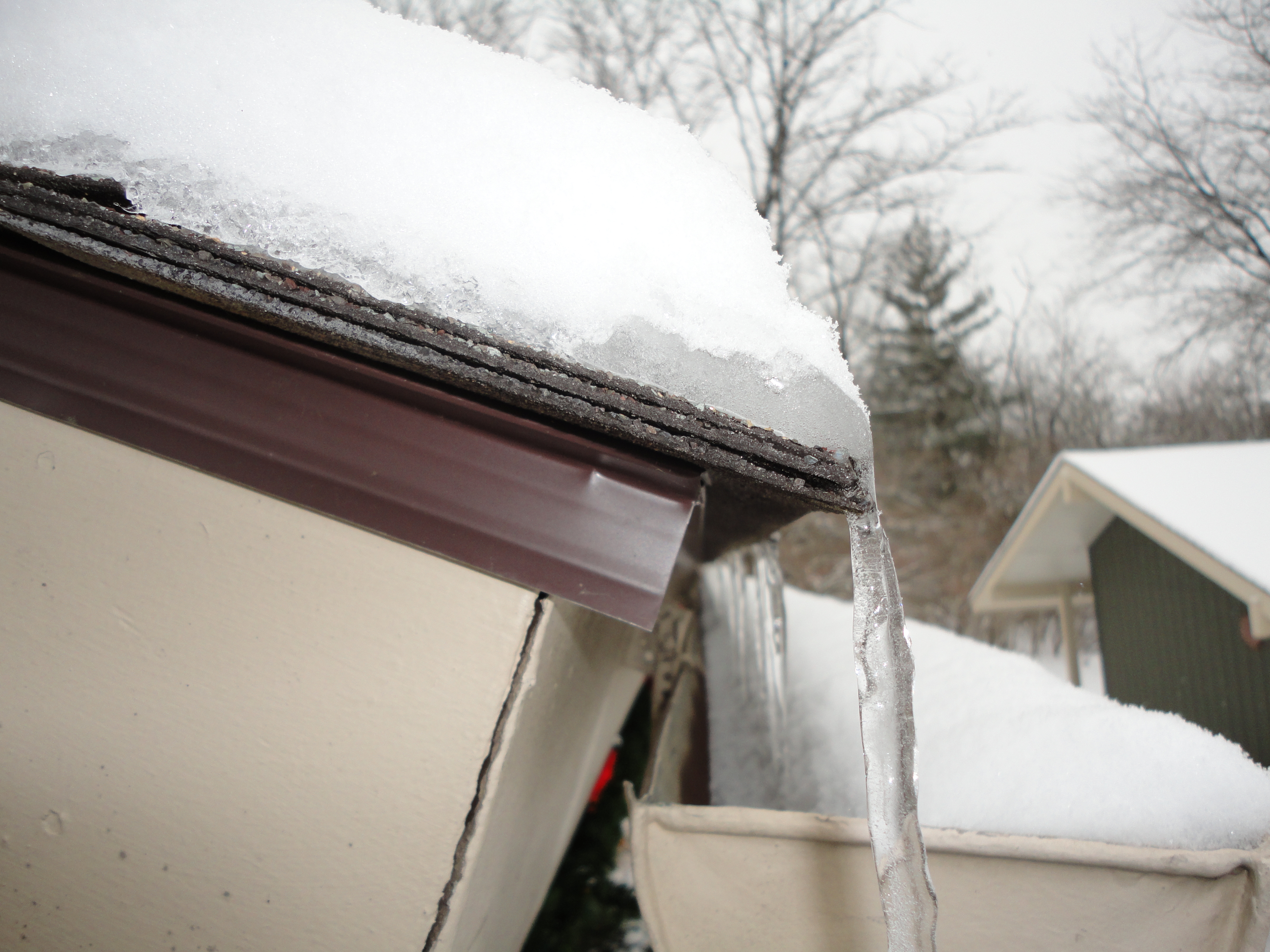
How to Prevent Ice-Damming From Ruining Your Roof
Lucky you if you’ve never heard of ice-damming! Maybe you live in a part of the country where you don’t need to prevent ice-damming because this winter pest isn’t a problem.
But here in the Midwest, ice damming happens without much warning, and can cause significant damage to the inside and the outside of your home.
Ice dams are caused when warm attic air melts some of the snow on the roof; the water runs down to the uninsulated roof overhang and refreezes. The cycle repeats until a “dam” of ice has built up on the roof overhang.
The dam, and large icicles that often form with it – can get heavy enough to damage the roof – even pulling off gutters and downspouts.
More critically, the ice dam blocks the drainage of additional snow-melt from the roof, allowing water to back up under the shingles. That water can wick up under the shingles and leak into the house, damaging insulation, framing, drywall, and trim.
So how do you prevent ice-damming, a snow-belt menace?
The technical solution involves the right amount of attic insulation and ventilation, but proper design and detailing is even more critical.
Typical “production” house roof detailing has two critical flaws that can actually contribute to ice-damming. Both are the result of cutting corners to cut costs (this is potentially a very expensive place to be cutting costs).
The first flaw is “pinching” the attic insulation out near the walls, where the roof slopes down all the way to the attic floor. If the insulation’s too thin at this point, it won’t have the necessary R-value you need to prevent the air in the attic from warming up and melting snow on the roof.
Solve this problem – permanently – by using a “raised heel” detail at the roof edge, and get the full depth of insulation at the most critical point.
This detail raises the roof a little, so you’ll spend a tiny bit more on siding and trim – but what was it your grandparents told you about an ounce of prevention?
The second easy flaw to fix is the length of the roof overhang. Overhangs are often only 8 or 12 inches deep. That means if a little ice does happen to form on the roof (you can’t prevent it all), it forms close to the wall…which means it’s that much closer to damaging your house.
You’re better off to extend the overhangs as far as stylistically and structurally possible. For some home styles that could mean three or four-foot overhangs. You’ll still get some damming in some winter conditions, but it won’t back up far enough to damage the house.
But for most homes, a full 16 inches of overhang from the outside wall is probably enough, assuming the insulation and ventilation are right for your climate.
Roof details can be very technical, but they’re also an important feature of a home’s design. Protect your house and prevent ice-damming by getting the details and the design right.


